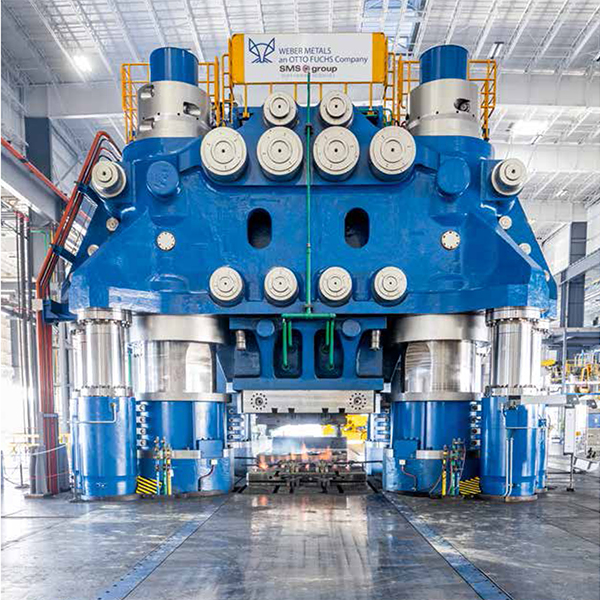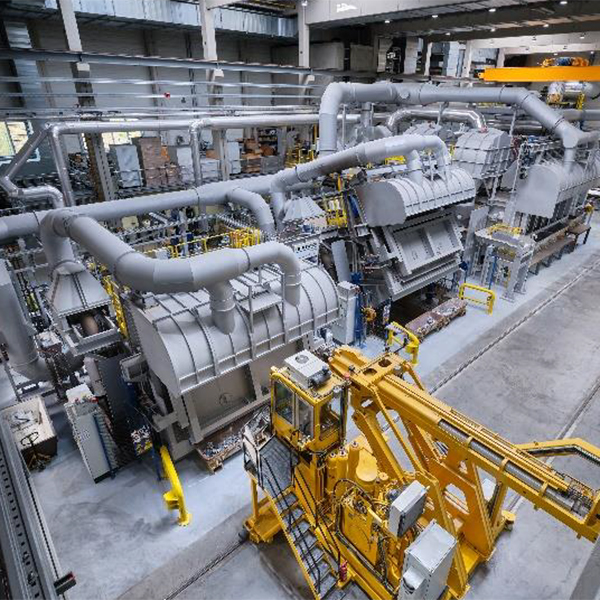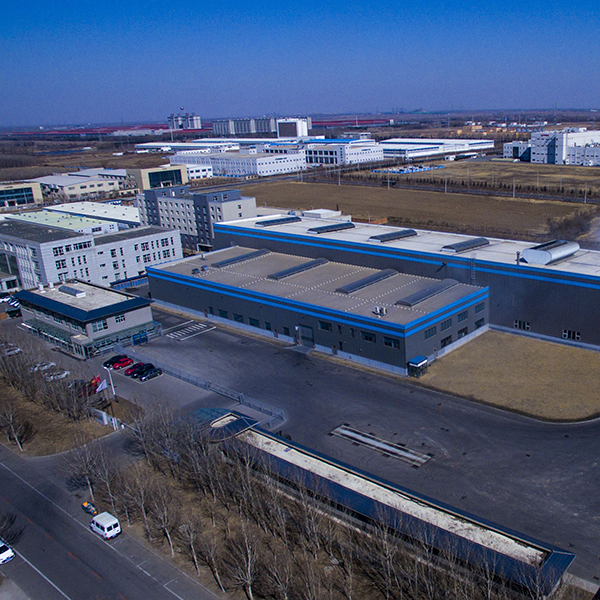Consciously and carefully using our resources is a foundation for responsible action: Be it for the environment, to minimise effort and save costs, or for designing effective work processes.


An essential part of the way we work is to use resources sustainably and with care.
We need numerous resources at all our sites around the world to be able to engage in our core business of developing, manufacturing, and processing highly specialized non-ferrous metal products. These resources include metals such as aluminum, magnesium, nickel, copper, and titanium, energy in the form of electricity, natural gas, and fuels, and water, consumables, and supplies. At the same time, our production process and the up- and downstream stages of the value chain – for example, being supplied with starting products or making deliveries to our customers around the world – cause direct and indirect greenhouse gas emissions, effluents, and waste. This has an impact on the climate and the environment and is associated with ever greater competitive disadvantages as well as costs for our company.
For us, acting responsibly is about giving some thought to the environmental impact of our processes, continuously improving them, and managing them in such a way that they place a minimal burden on the environment. Even minor optimizations can result in major savings potential and can minimize the costs we incur as a company. Our aspirations of environmentally friendly and resource-conserving corporate governance are defined in our integrated management handbook and in our memorandum of understanding regarding environmental policy. The guidelines serve as the framework for our environmental activities. We seek to minimize our energy consumption, emissions, effluents and waste, and the consumables and supplies we use, and to use sustainable manufacturing processes and materials. We use resources sparingly. Waste is recycled wherever possible.
Developing the appropriate processes is the responsibility of the individual companies within OTTO FUCHS. They each set themselves location-specific goals and define concrete measures. Our plants focus on making more efficient use of energy and optimizing their energy usage. This is all founded on systematic energy management. In the area of resource management, we focus in particular on optimizing the charge weights, reusing auxiliary materials, and generally minimizing our consumption levels. In this way, we not only contribute to establishing resource-conserving processes – we also reduce our operating and production costs.
Optimizing energy usage
As a metalworking company, OTTO FUCHS has high energy requirements because of its production portfolio. The processes within our value chain are complex and, with areas like casting, forging, extruding, and heat treatment, also very energy-intensive. In fiscal year 2020, OTTO FUCHS’s total energy needs came to 658,640 megawatt-hours. The primary energy sources include natural gas (2020: 253,057 MWh) and electricity (2020: 253,057 MWh). Even minor process changes can result in savings in terms of the resources used and can reduce our greenhouse emissions and costs, too. As such, using energy efficiently is a question of environmental and economic responsibility.
During the reporting period, all OTTO FUCHS locations initiated and implemented individual measures to save energy and reduce climate-damaging emissions. Developments at our main site in Meinerzhagen serve as a good example here. The plant set itself specific energy targets for the next three years as part of the company’s operating goals. The focus here is on three strategic goals: improving energy efficiency, significantly reducing the specific energy consumption levels of both electricity and natural gas, and increasing the degree of detail when measuring energy consumption levels. For each of these strategic goals, OTTO FUCHS in Meinerzhagen has defined concrete subgoals for the site’s various divisions and departments and has stipulated operating measures. This includes, above all, installing new equipment or optimizing existing equipment and facilities, but also upgrading infrastructure, such as replacing hall lighting, reducing leakage losses and intensifying heat recovery.
Our Meinerzhagen site has been implementing various measures to increase energy efficiency for a number of years. In 2015 and 2016, our energy consumption was reduced in particular by our optimizing the supply of forging press water, a new furnace concept in zone in the large forging shop, and the commissioning of a combined heat and power system (CHP). However, we do not focus solely on technical improvements in order to achieve our strategic energy goals. It is also important to us that we cultivate a sense of responsibility among our employees.
Our aim is to encourage all the employees to use energy and resources sustainably and to actively apply themselves to the process of continuously improving our operating processes. OTTO FUCHS pays bonuses to its employees for their suggestions if selected. The „10 Golden Environmental Rules“ pocket cards summarize our guiding principles regarding responsible joint conduct. With this and other measures, the Meinerzhagen site is actively playing its part in improving energy efficiency and further optimizing our energy requirements. Electricity consumption at the Meinerzhagen site fell in the reporting period from 452,140 megawatt-hours in 2018 to 414,658 megawatt-hours (cyclically-adjusted) in 2020.
We create trailblazing products and rely on resource-saving processes.
OTTO FUCHS’s total energy consumption increased every year from 2015 to 2019. In 2020, however, energy consumption fell below the 2015 level (697,282 megawatt hours) to 658,540 megawatt hours. This increasing development in the period from 2015 to 2019 is mainly due to the OTTO FUCHS wide increase in revenue and volumes, additional production facilities and an overall increase in the share of titanium and nickel products, which require higher forging temperatures and are therefore more energy-intensive in their processing. The growing share of finished parts, especially at our locations in Meinerzhagen and Dülken, also contributes to the overall development in energy consumption. The sharp drop in energy consumption in 2020 is due to lower production volumes as a result of the Corona pandemic.
We are making a conscious effort to increasingly use natural gas at our plants, this being a low-emissions energy source. This is exemplified by the decision to commission a combined heat and power system at the Meinerzhagen site and the replacement of furnaces run on electricity by furnaces powered with natural gas. The resultant increase in natural gas consumption corresponds with a positive development in our greenhouse gas emissions thanks to the high utilization ratios and a good carbon footprint.
Certified management systems
The majority of our sites are certified in accordance with the international standards ISO 14001 and ISO 50001, and are subjected to regular internal and external audits. To increasingly incorporate environmental aspects into our processes and exploit synergies as part of an integrated management system, we are working on further systemizing and more closely coordinating the areas of occupational safety, environmental protection, and energy management. We are also working toward standardizing the management systems and standards we use around the world.
DEVELOPMENT IN GREENHOUSE GAS EMISSIONS
We record our greenhouse gas emissions (GHG emissions) all along the value chain as part of our accounting activities. We make a distinction between two types of emissions: Scope 1 refers to direct emissions from sources at OTTO FUCHS sites, including our own manufacturing facilities, for example. Scope 2 encompasses indirect energy-based GHG emissions. These are caused by the generation of the purchased or acquired electricity or heating and cooling energy needed by our sites.
Overall, more than 50 percent of our GHG emissions come from the electricity we purchase. Despite rising energy consumption, our absolute emissions have fallen slightly, and our specific emissions have even dropped by almost 20 per cent between 2017 and 2019. This is mainly due to modernization investments and energy efficiency projects.
CLIMATE-FRIENDLY THANKS TO CO-GENERATION
In view of increasing energy costs and company and statutory requirements regarding greenhouse gas emission reductions, it is essential that the efficiency of technical facilities be boosted further, and that energy be used carefully. Energy which is environmentally friendly and which comes from decentralized sources is therefore becoming more and more important when it comes to our sites’ energy supplies. In Meinerzhagen, for example, we operate an extensive industrial heating network which supplies the production processes – such as the heat treatment facility’s water baths – with heat of up to 145 degrees Celsius during preheating, then provides room heating of up to 90 degrees Celsius. To cover the resultant electricity and thermal energy needs as efficiently as possible, the plant put a gas-powered combined heat and power system (CHP) into operation in October 2015. A gas engine generates electrical energy and the waste heat generated in the process is used within the company processes. The electrical energy generated during an hour of operation is enough to cover the entire annual energy needs of the average four-person household. The CHP system has been running at full load since 2016 and now covers more than 20 percent of the Meinerzhagen site’s electrical energy needs. There are opportunities to use efficient energy concepts, in particular when new production facilities or plants are built. In view of the positive development at our main site, we therefore planned for a combined heat and power plant from the outset when we built our new plant in the Grünewald industrial estate in Meinerzhagen and put it into operation in 2019.


